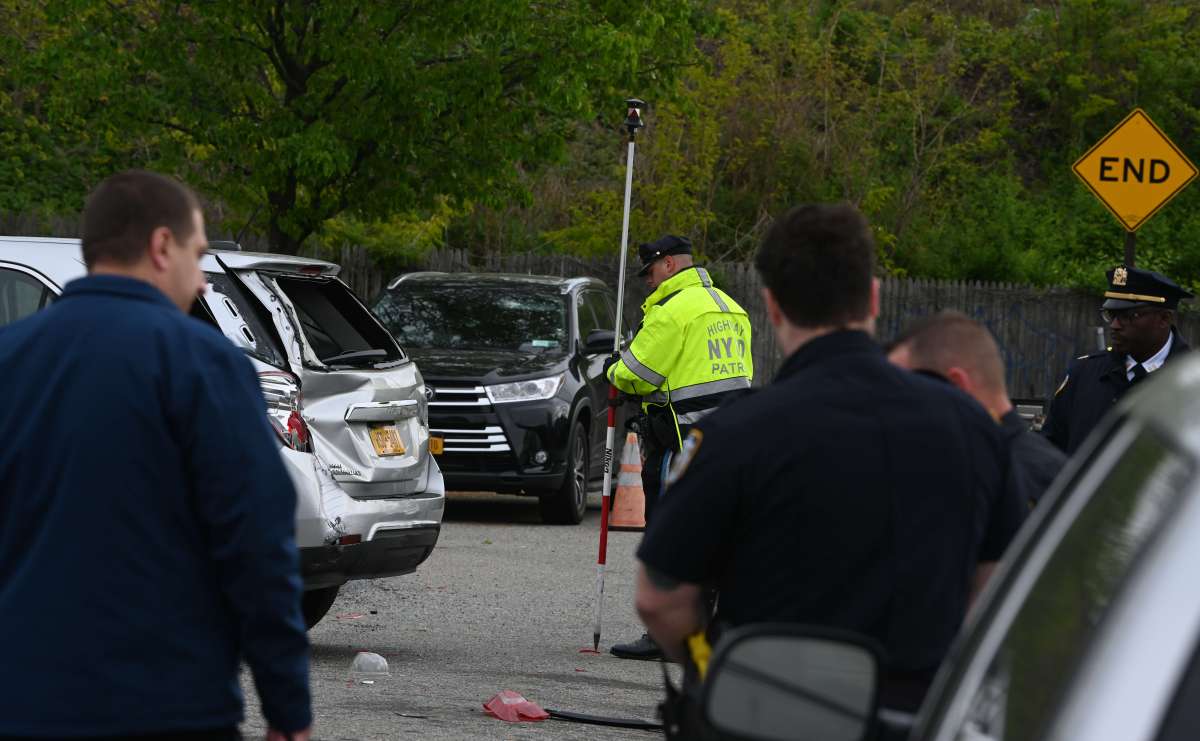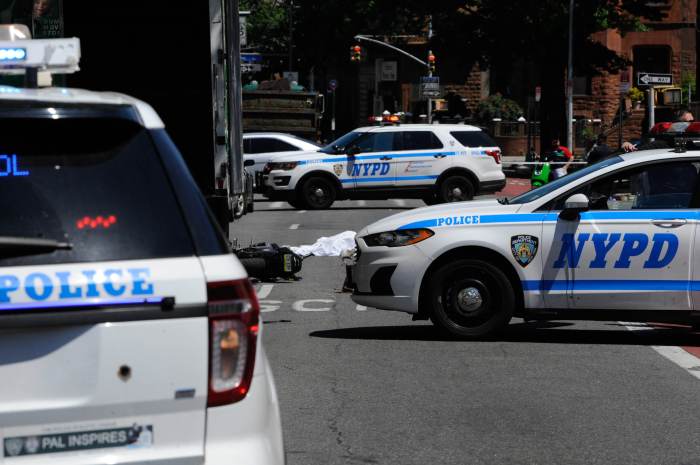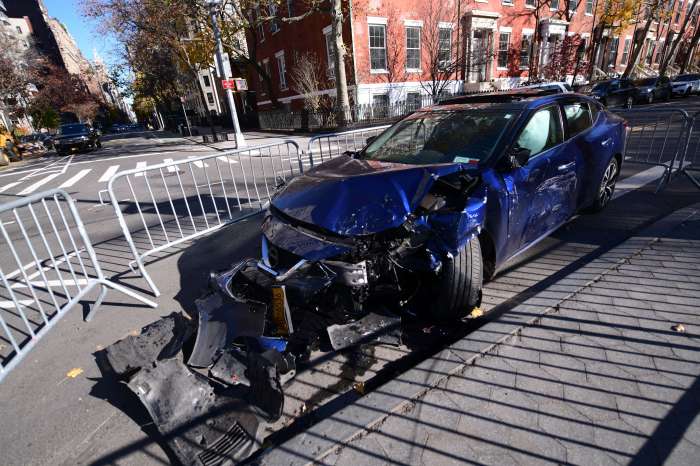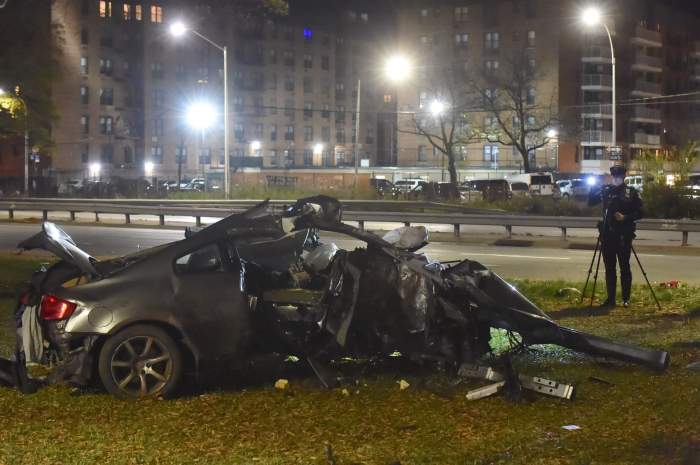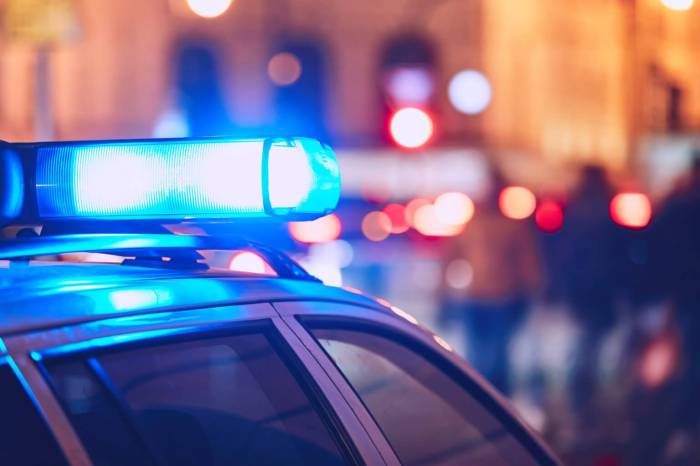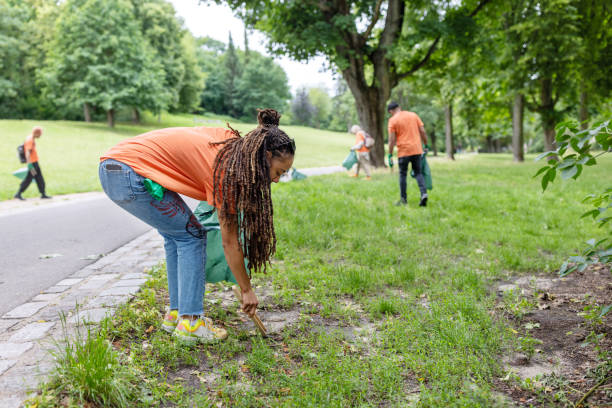One week ago, Mayor Eric Adams and Department of Transportation Commissioner Ydanis Rodriguez stood at a dangerous street in East New York, Brooklyn, touting a new $4 million ad campaign.
The plan, launched on May 2, aimed to scare drivers heading down Pennsylvania Avenue and other stretches of road with high crash rates into being careful behind the wheel by installing billboards above showing a person flying through the air after being hit by a driver, accompanied by the warning: “Speeding ruins lives. Slow down.”
Over the following week, at least a dozen New Yorkers would lose their lives on the city’s streets — almost two a day — as crash rates continued to climb above 2021 levels, itself a record-breaking year for traffic violence.
The deaths include 16-year-old Bronxite Alissa Kolenovic, who struck by a delivery truck driver on Wednesday; 35-year-old cyclist Eric Salitsky, who was mowed down by a commercial waste truck driver in Brooklyn the following day; and 72-year-old John Dellacava, who was killed by a driver while trying to cross a Bronx avenue in an electric mobility scooter on Saturday.
‘You do better’
The mayor’s and DOT’s project to frighten drivers into better behavior was yet another in a long series of failed initiatives by city officials to curb road injuries and fatalities with public awareness campaigns, argued Jessie Singer, a Brooklyn-based journalist and author.
Singer recently released her book “There Are No Accidents,” which details the history of accidents in the United States and how systemic, policy, and design choices are the key to understanding and reducing them, whether they be in traffic, resulting from an oil spill, or drug criminalization.
“We know this a hundred times over: straight, wide streets without traffic calming measures — just like the one for the city’s posting these billboards — these streets are designed for speeding and encourage speed,” said Singer in an interview.
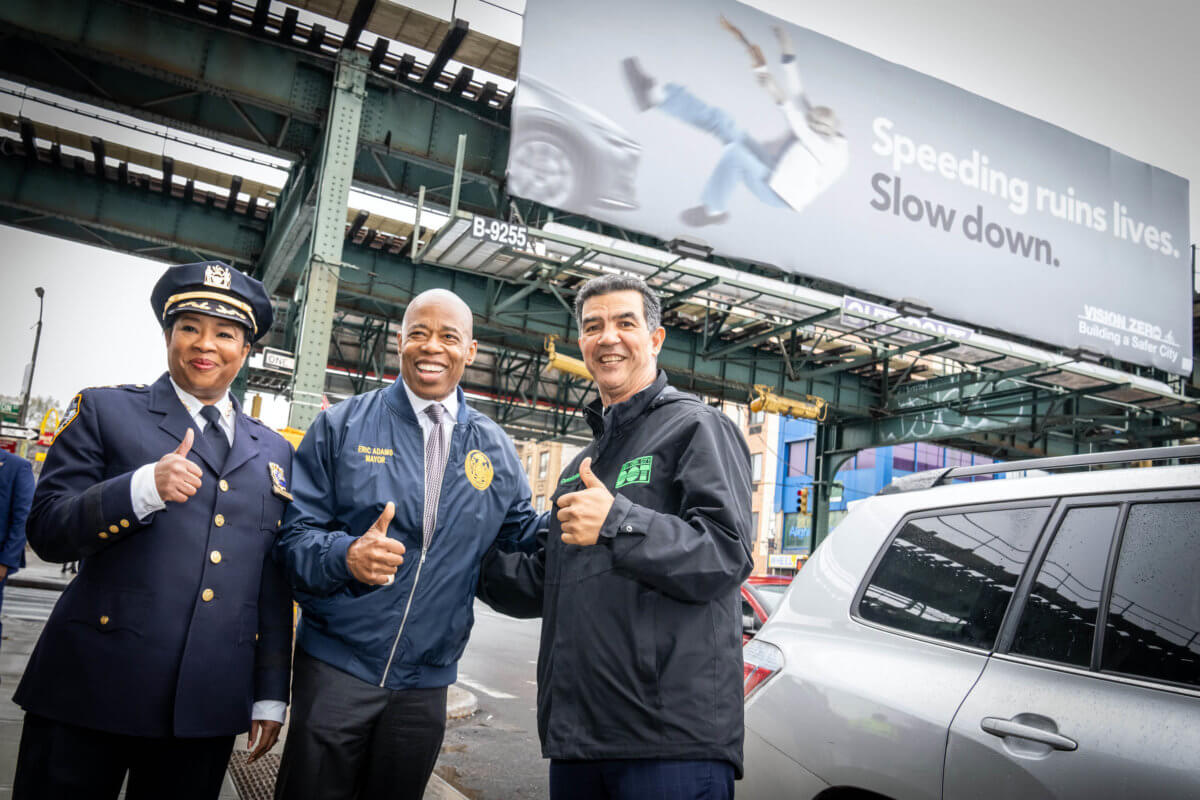
The posters shifts focus away from the shoddy roadway design — which safe street advocates say is the key to reducing crash rates — toward individual bad apples like reckless or drunk drivers, Singer said.
“What the City of New York is doing is taking a road — a known dangerous road with known dangerous conditions — and they’re putting a sign on it that says, ‘This is not our responsibility, you do better,’” she said.
The writer pointed to a similar road sign campaign in Texas that displayed a tally of traffic violence, but which, research suggests, actually made streets they were on less safe and saw increased crashes.
“The city should have spent this money redesigning those streets, instead of wasting it on scolding drivers for driving in the exact way that the road design encourages them to drive,” so Singer.
Rising toll
There have been 79 traffic deaths across the Five Boroughs this year so far as of Sunday, May 8, up from 68 the same time last year, according to statistics provided by the DOT.
The bump was driven largely by an increase in deaths of people inside cars, while pedestrian and cyclist deaths decreased slightly, which DOT officials believe indicates an increase in reckless driving.
Advocates said the city must return to the core principles of Vision Zero, which was launched under former Mayor Bill de Blasio when he took office in 2014 and aimed to reduce road deaths to zero primarily through street design, along with education and enforcement.
“Billboards alone will not will not get us to Vision Zero, which is why we are calling on urgent action from city and state leaders,” said Cory Epstein, a spokesperson for the group Transportation Alternatives.
So-called traffic-calming designs of streets encourage drivers to go more slowly and carefully, according to DOT, including by adding bike lanes, more pedestrian space, and narrower and fewer car lanes.
“Vision Zero is an approach that really focuses on redesigning streets for safety, and basically designing streets to prevent reckless driving from happening in the first place, and designing streets so if drivers make mistakes, that the consequences of those mistakes are not deadly,” Epstein said.
A 2021 article in Curbed illustrated in great detail how the city could immediately improve safety on corridors by setting aside more space for people and bikes and less for cars.
Since Adams took office, he vowed to redesign 1,000 of the city’s most dangerous intersections and dedicate some 900 million in this year’s budget for street safety upgrades.
The commitment was below the $3 billion the City Council is pushing for in the annual spending plan.
DOT Commissioner Ydanis Rodriguez also promised to fortify half of the city’s plastic-protected bike lanes within his first 100 days, but later geared back his goals to hardening 20 miles of bike lanes over two years.
The agency aims to revamp the 1,000 intersections by the end of this year, said Deputy Commissioner for Transportation Planning and Management Eric Beaton at a Monday press conference.
Seeking upstate help
In response to the rising injury and death rates, City Hall and DOT have more recently been beating the drum of lobbying another level of government, that is state lawmakers up in Albany, who they are urging to finally give the Big Apple full control over its automated speed camera enforcement after decades of limited pilot programs.
The city currently has to by law deactivate the cameras on nights and weekends, allowing speeders to evade automated enforcement.
“We have one message: We need help from Albany,” Rodriguez told reporters at the Monday afternoon press briefing at the East Village intersection where 21-year-old NYU student Raife Milligan was fatally struck a week earlier. “There’s so much blood that we have in the streets that we can stop.”
“Our agency is doing everything in our power and using all the tools we have to make sure we redesign our streets, we reorganize our signal system,” he added. “But reckless drivers is the factor that is causing all those deaths and injuries of pedestrians and cyclists.”
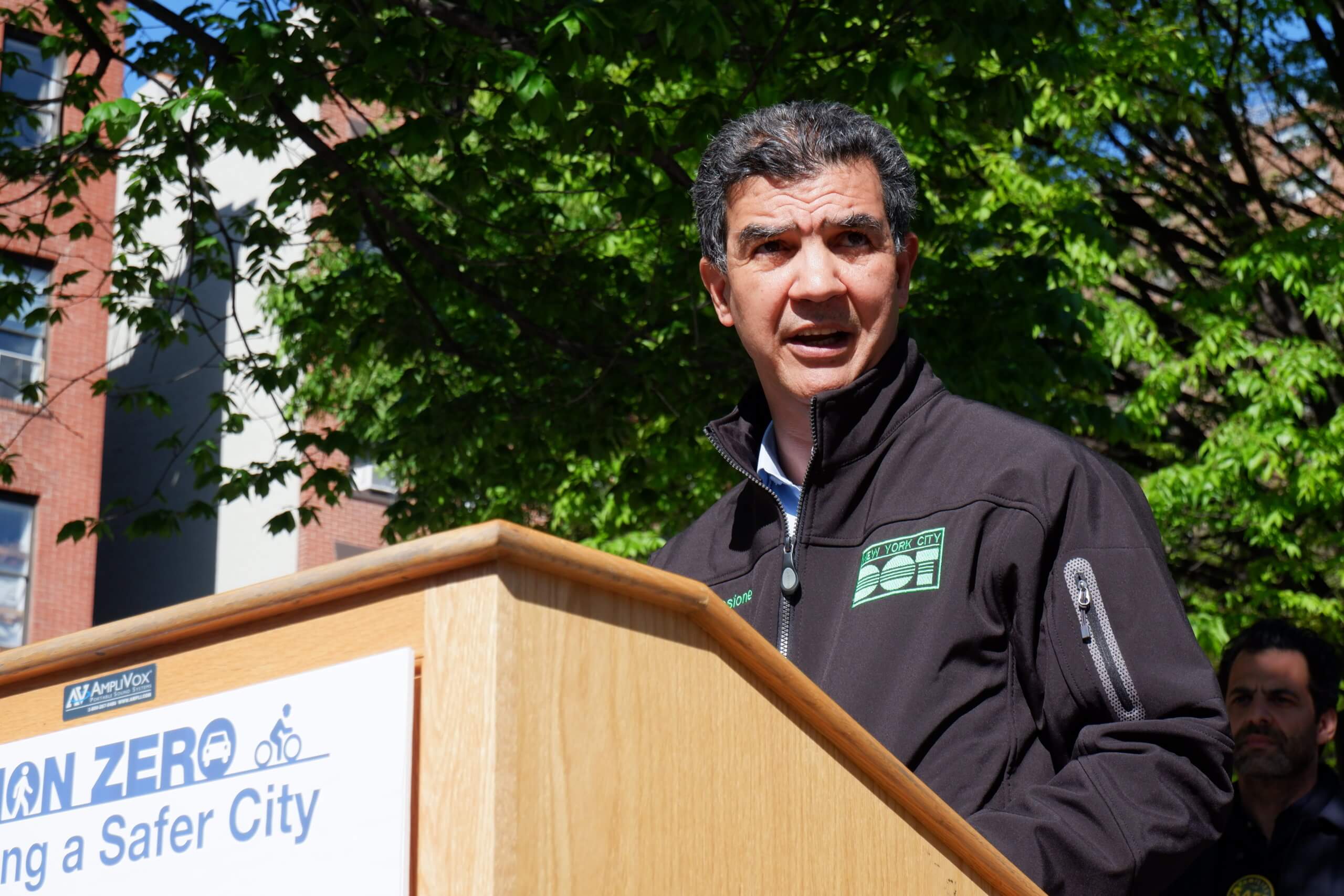
Singer said that automated enforcement works because it’s a guaranteed consequence for bad driving — as opposed to police handing out tickets which can feel more like just bad luck — but that it is also merely a safeguard ahead of better streets.
“Road design is the single most important key to reducing traffic fatalities,” said Singer. “Automated enforcement is a helpful, temporary fail-safe on the road to that necessary work.”
City Hall spokesperson Charles Lutvak referred a request for comment from the mayor to statements hizzoner made Friday, which focused on heightened enforcement.
“We have to be proactive. When you look at the numbers, the number of people driving while under the influence, the reckless driving, speeding, hit and runs, that’s something many people have ignored for a long time,” said Adams on May 6. “ We have to do proper enforcement to really go after those who are making our roadways dangerous.”



